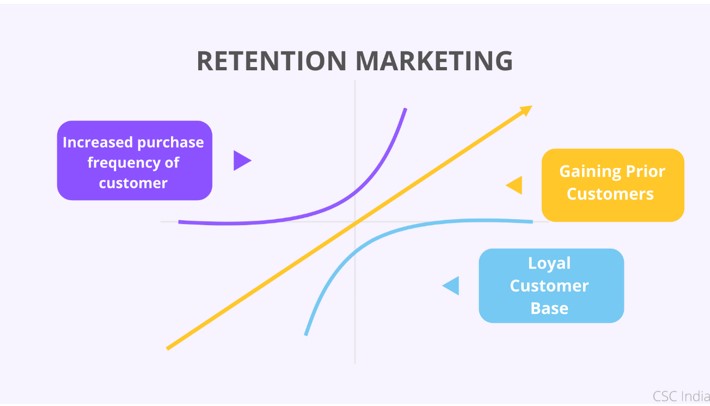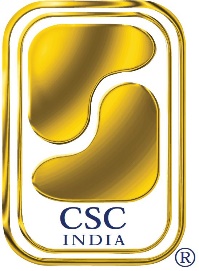Retention marketing has taken the e-commerce world by storm. This school of marketing aims to maximize the value of existing customers and retain them. It varies from the traditional methods of acquisition-based marketing as the goal is not to get more customers, but to encourage repeat purchases and increased product usage from existing customers.
We can increase the Customer Lifetime Value (CLV) which aids in long-term profitability by delivering engaging and relevant content to the active customers. The customers are plausible to churn if we make customer acquisition our basis which additionally affects revenue and profit margins.
For retention marketing in the E-commerce sector, encourage customers to revisit your website, and return to your app (if any) to keep making high-value purchases repeatedly. In the case of Subscription, stimulate users to keep the subscription active or upgrade them to a more advanced/premium plan.
Retention marketing strategies are aimed at current, active, or retained customers. Researchers state that 10% of your loyal customers spend 3 times more per order/subscription than the other 90%, and the top 1% of your customers spend 5 times more than the other 99%. Existing customers know your brand well and the chances of selling to them are higher as you’ve already established a relationship with them. The success rate of selling to a new customer is comparatively low.

- Statistics have repeatedly concluded the nature of retention marketing to be more feasible & profitable. Customer retention can boost revenue.
- There is a high possibility of spending in the 30+ months of the customer-engaged relationship as compared to the first 6 months.
- A customer makes multiple purchases than a first-time visitor, in e-commerce alone.
The retention marketing strategy also depends upon the nature of the business. For example, a brand selling clothes needs to invest more heavily in retention marketing than a brand selling sanitaryware. Clothes are bought repeatedly but sanitary fittings are once-a-decade things. The retention marketing mix thus will vary from business to business.
Retention Marketing Approach
- Personalization – It is the key to winning a customer. Addressing the customer by their names in emails or messages, sending messages/pop-ups based on their purchase history can delight the customers. According to a survey in the US, UK, and Canada of 3000 consumers, more than 60% of customers expect personalization when being sent special offers, to be a standard procedure.
- Offers and Discounts – It is a sure-shot way of retaining existing customers and boosting sales. With discounts and offers, customers tend to stick, and their purchase frequency increases.
- Email Marketing – A newsletter works as a constant reminder and aids in brand recall. The launch of a new range or an upcoming sale can be communicated through the newsletter. Email strategies like welcome mail and cart abandonment help in keeping a customer engaged.
- Loyalty Program Business Model – This strategy is a mutually beneficial one. It offers valuable rewards and special perks to the customers subscribed under the loyalty program of your choice. These users will be less inclined to switch to competitors, and it adds up to the customer’s lifetime value. These loyalty programs will assure you about the customer’s willingness to stay connected with your brand. Customers tend to leave when they think you’re indifferent to them or the content is not relatable.
- Customer Progress – Make a customer-friendly UX/UI interface for users to easily slide through. Existing users are familiar with the onboarding process and have built trust around it. In this process, monitor the progress of your customers and notify them about the positive progress they have made on your portal/app. It could be educational, health-centric, crypto news, or as simple as a notification of your shopping cart.
Over the past years, the cost of customer acquisition has risen for both B2C and B2B companies. Adobe’s CEO Shantanu Narayen in an Ad News interview said that too many companies are chasing customer acquisition when the real value lies in driving product usage and understanding high-value actions from customers.
Customer Retention
- More reasonable to acquire repeat customers than to find new customers
- Recurring customers are more loyal to your brand
- Minimum product onboarding/information required by repeat customers
Retention Marketing is the new catalyst for growth. Here’s how. According to Harvard Business Review, it is more expensive to acquire a new customer than it is to retain an existing one. Existing customers understand the value proposition of your organization, so making an advertising pitch to them is not a budget-friendly move. Due to an established relationship with your existing customers, you have a 60-70% chance of selling to them. The success rate is less than 20% in the case of new customers.
Money invested on retention is more effective than money disbursed on acquisition. Data shows that improving your lifetime value or retention is more impactful than improving your acquisition. This will ensure a larger return on investment on your marketing budget to engage current customers.
Retention fuels acquisition. It is a proven product with the primary goal of retaining and not bringing in new users. The best acquisition strategy to retain your satisfied customers is through referrals and word-of-mouth marketing, something that more than 90% of the consumers trust more than any other form of advertisement.
Customers have more chances to give a referral if they return to your business. The average new user may refer your shopping app to 2-3 people. While after regular purchases, the shopper will most expectedly refer it to approx. more than 5 people. According to Neilsen’s Global Consumer Study Report in 2019, customer “disloyalty” is on the rise. Today, nearly half of the global consumers are more likely to try new brands that they’ve never tried before when compared to their willingness five years ago.
Consumers can now download new apps in seconds and set up an account in merely 3 simple steps. Brands need a dedicated team of professionals to counteract the fact that customers are in line when shifting costs are inherently low.
Retention strategies are no longer pleasant to have for digital businesses. The ability to engage and retain your loyal customers is equally essential. Without which you won’t be able to realize a rational profit. Retention marketing does not replace acquisition marketing completely, but it can be a more effective approach and a necessary tool for growth strategy. Long-term growth demands a balanced marketing strategy as retention marketing.
Loyal customers create more reliable customers. Keep the network chain active.
*Views expressed in the article are personal, not of the organisation


